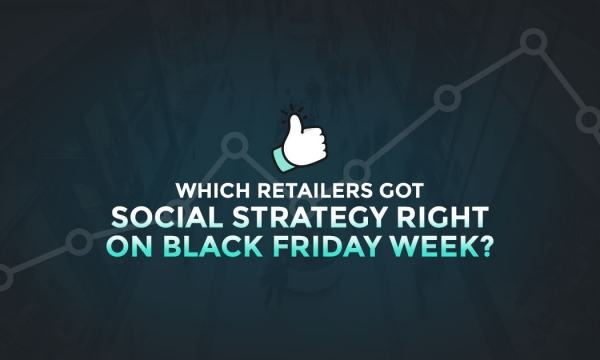The decision by Amazon to invest in the creation of Spark, an Instagram-Pinterest hybrid that is currently being trialled to Amazon Prime customers in the US, generated headlines last week. But there are good reasons why Amazon, and other large ecommerce brands, are looking to have a greater level of control over their digital communities.
Brand frustration with established social media

Millions of pieces of branded content are published to social media every day, but much of that content reaches just a tiny fraction of the audiences that many brands think it should reach.
Social media algorithms are being increasingly selective about the content that they distribute organically. Facebook introduced its algorithm in 2014, and many brand are finding that their content is reaching as little as 2% of their actual Facebook audience organically.
The social networks claim that this is simply to ensure that only the most appropriate content reaches the news feeds of their users, whilst others argue that the platforms are deliberately rationing the flow of content in order to force brands to pay for amplified distribution.
Other social networks also have their flaws, and this has left many brands questioning the value of their investment in social media content and trying to engage audiences through the established platforms.
By taking ownership of their own social community, ecommerce brands can ensure that they control the distribution of content and integrate ecommerce functionality on their terms.
Building a brand community

Branded communities aren’t a particularly new concept. Many brands have tried to embrace community elements and user-generated content, with various degrees of success.
Amazon, of course, has a sizeable user base of both consumers and resellers - all of whom are potential wells of content just waiting to be tapped. Amazon already has a strong user reviews section, and this social network is undoubtedly one way to bring that particular feature to life. Expect to see video and photo content, more discussion and more ideas than a typical “rate and comment” review system would ordinarily allow.
One of the key traits of any community, digital or otherwise, is that they tend to help each other and in this case, it is Amazon that stands to really gain from this sense of community with the launch of Spark. If a user wants advice or inspiration, they can turn to the Spark community and very quickly be directed to the most appropriate Prime eligible product that will be delivered to the door before they have even realised what has happened.
But of course, brand communities do carry risks - and over-zealous moderation of any community is a sure-fire way to stop it dead in its tracks. Brands can do much to steer the conversation and debate, but finding the right balance in managing it is a difficult act.
User-generated content that fuels the customer journey

As the customer journey has become more and more complex, content has played a much bigger role in the process of nurturing a customer from enquiry to sale. Unfortunately, the volume of content that is often needed is far greater than what brands have historically been able to produce with their own resource.
User generated content can be part of that solution, and has the added benefit that it tends to be considered more trustworthy amongst consumers than brand-created content, and many brands are now incorporating this into their strategy. For example, many travel brands now include Trip Advisor reviews alongside their own customer reviews.
There are plenty of experts out there, and there are plenty of people who can come up with lots of inspiring, engaging content. What Spark is trying to do here is to capitalise on those people and that content - and to come up with content that the brand simply wouldn’t (or couldn’t) come up with.
Powering voice search

The more content that brands can provide, and the greater variety of content that brands can provide, the greater their chances of powering the growing volume of voice searches. Amazon, of course, has a big stake in voice search and this network help its Echo system to overcome some of its shortcomings.
The Alexa personal assistant still struggles with many requests that aren't relatively straightforward, and will take a lot of content to address that problem.
By allowing the Amazon community to develop that content, not only are they tapping into a wealth of resource to speed up that content creation process, they are getting a much clearer picture of what its audiences engage with and respond to - and that could shape Alexa's responses.
But not all brands are Amazon….

Indeed, not all brands are Amazon, and few brands have become something of a de-facto “one stop shop” for practically any consumer good imaginable.
But many brands either have become, or have the potential to be, an authority voice for their particular niche and their particular sector. Whilst this may not itself justify creating a whole new social media platform with dedicated mobile apps, it may be worth considering how your brand can really direct and take part in the conversation on your own terms.
It will require an awful lot of content, it will require resource and it will require a strong push in order to build and grow that community. But by making that community a bigger part of your social media and content marketing strategy, you could put your brand in a much better position to capitalise on all aspects of the customer journey and let your audiences become much bigger advocates for your brand.


